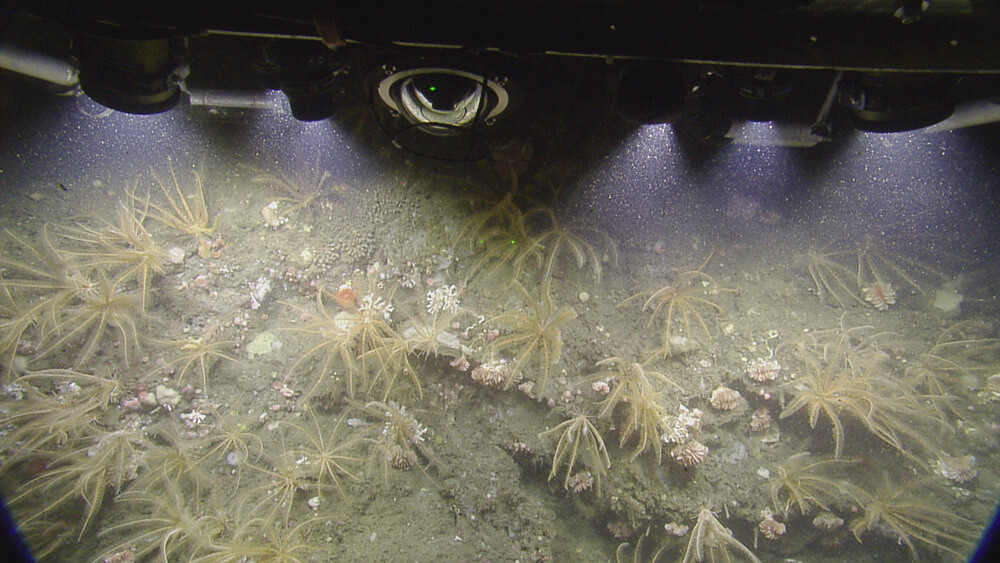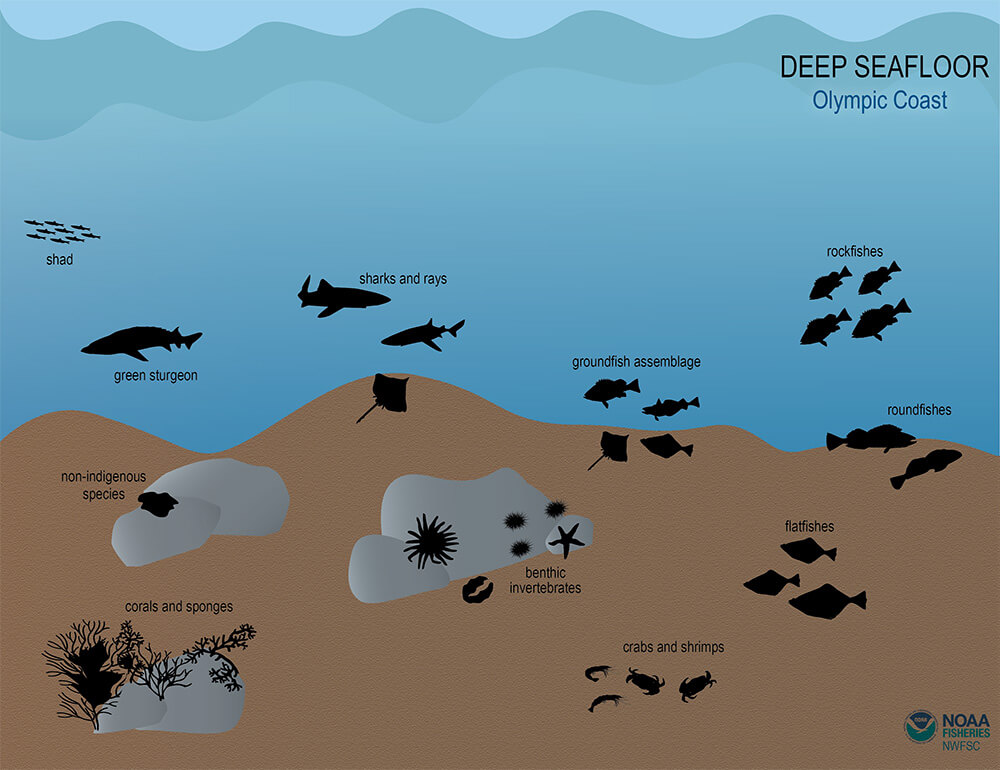Deep Sea

Deep seafloor habitats are usually cold, dark, and subject to intense pressure, making it a challenging habitat for humans to access and study. Organisms living here are specially adapted to their environments; many grow slowly and are vulnerable to physical disturbance and changing ocean conditions. Shrimp, rockfish, halibut, and whiting are often found living in, on, or just above the seafloor, attracting commercial, recreational, and subsistence harvesters.
Click on the illustration below to access user-friendly, online tools that allow resource managers, scientists, educators, students, and the public to explore, discover, and summarize ecosystem trends at the sanctuary.

Explore recent deep-sea expeditions in Olympic Coast National Marine Sanctuary through the links below:
2020 E/V Nautilus NA121
Overview and highlights
Full Nautilus Live ROV video
Oceanography Volume 34 | Number 1 | March 2021-
2019 NOAA Ship Bell M. Shimada
NOAA Report (PDF) -
2019 Schmidt Ocean Institute R/V Falkor
Oceanography Volume 33 | Number 1 | March 2020 -
2018 E/V Nautilus NA096
Overview and highlights
Full Nautilus Live ROV video
Oceanography Volume 32 | Number 1 | March 2019 -
2017 E/V Nautilus NA086
Full Nautilus Live ROV video
Oceanography Volume 31 | Number 1 | March 2019 -
2016 E/V Nautilus NA072
Overview and highlights
Full Nautilus Live ROV video
Oceanography Volume 31 | Number 1 | March 2019
For more information on specific research project or to request a copy of a report, email us at olympiccoast@noaa.gov.

